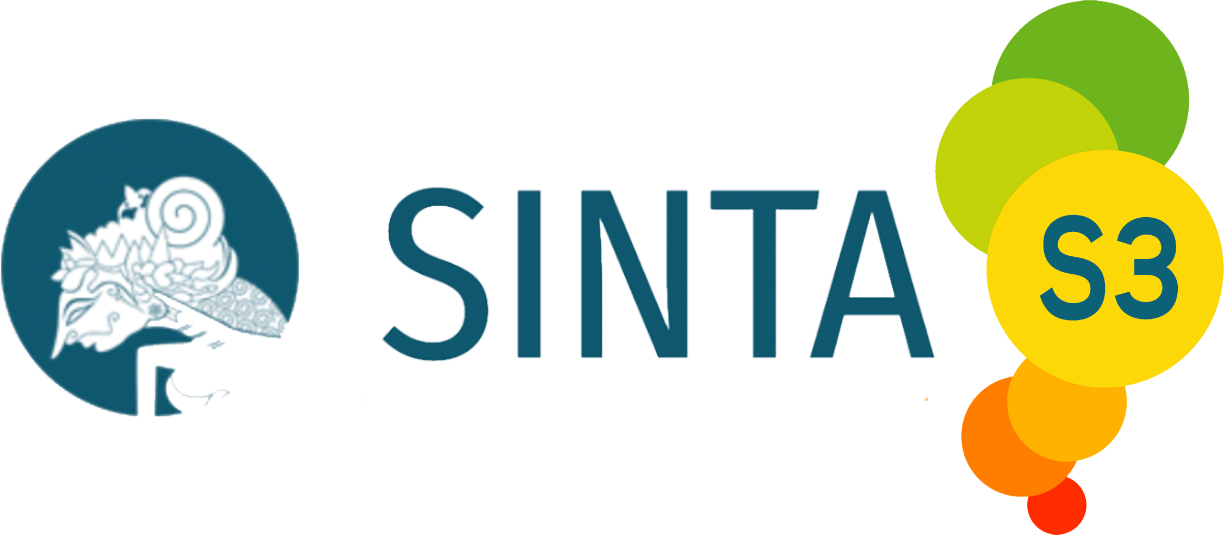Efektivitas Media Pembelajaran Augmented Reality Materi Bangun Ruang Sisi Datar di SMPN 1 Gunungsari
Authors
Wirda Hasanah , Harry Soeprianto , Baidowi , sripatmiDOI:
10.29303/jm.v7i1.8773Published:
2025-03-25Issue:
Vol. 7 No. 1 (2025): Edisi MaretKeywords:
1;Model Pembelajaran Berbasis Masalah 2;aktivitas belajar 3;hasil belajar 4;Liveworksheet, Media Pembelajaran MatematikaArticles
Downloads
How to Cite
Downloads
Metrics
Abstract
This study aims to determine the effectiveness of Augmented Reality (AR)-based learning media on students' mathematics learning outcomes of flat-sided space building material. This research uses a quasi-experiment method with a non-equivalent control group design. The subjects of this study were VII grade students of SMP Negeri 1 Gunungsari as many as two classes, namely the experimental class and the control class. Where the experimental class is given Augmented Reality-based learning media while the control class is given website-based learning media. This study was conducted for 5 meetings, starting with giving a pretest, followed by learning by implementing learning media for 3 meetings in each class and giving a questionnaire of learning interest for the experimental class. The last meeting was held posttest to determine student learning outcomes. Data analysis used independent sample t-test and N-Gain Mean analysis. The results showed that AR media was significantly effective in improving students' math learning outcomes (P < 0.005), with the N-Gain category of the experimental class classified as high and effective, while the control class was categorized as less effective. In addition, the use of AR media also increases students' interest in learning, with a very good category.
References
Aditama, P. W., Adnyana, I. N. W., & Ayu Ariningsih, K. (2021). Augmented Reality dalam Multimedia Pembelajaran. Prosiding Seminar Nasional Desain Dan Arsitektur (SENADA), 2, 176–182. https://eprosiding.idbbali.ac.id /index.php/senada/article/view/225
Agustin, M. N. R., Subarinah, S., Soeprianto, H., & Arjudin. (2023). Analisis Kemampuan Spasial Siswa pada Materi Bangun Ruang Sisi Datar ditinjau dari Gaya Belajar di Kelas VIII SMPN 6 Mataram Tahun Ajaran 2022/2023. Pendas: Jurnal Ilmiah Pendidikan Dasar, 9(1), 1380–1392. https://doi.org/https://doi.org/10.23969/jp.v8i1.8033
Ain, H., Baidowi, & Hapipi. (2020). Kemampuan Siswa dalam Pemecahan Masalah Geometri berdasarkan Tingkat Berpikir Van Hiele. Jurnal Pijar Mipa, 15(3), 273–279. https://doi.org/10.29303/jpm.v15i3.1886
Arjudin, Sripatmi, Prayitno, S., Tyaningsih, R. Y., & Triutami, T. W. (2022). Pelatihan Pengembangan Media Matematika Online dan Penerapannya dalam Pembelajaran bagi Guru-Guru Mi Al-Istiqomah Telagawaru Kecamatan Labuapi Kabupaten Lombok Barat. Jurnal Pepadu, 3(3), 412–420. http://jurnal.lppm.unram.ac.id/ index.php/jurnalpepadu/index
Baidowi, Sarjana, K., Novitasari, D., & Eka, K. (2021). Analysis of Students’ Geometric Thinking Level in Blended Learning Setting. The 1ST International Conference on Education and Science, 110009. https://doi.org/https:// doi.org/10.1063/5.0122569
Bhagat, K. K., Yang, F.-Y., Cheng, C.-H., Zhang, Y., & Liou, W.-K. (2021). Tracking the Process and Motivation of Math Learning with Augmented Reality. Educational Technology Research and Development, 69(6), 3153–3178. https://doi.org/10.1007/s11423-021-10066-9
Buentello-Montoya, D. A., Lomelí-Plascencia, M. G., & Medina-Herrera, L. M. (2021). The Role of Reality Enhancing Technologies in Teaching and Learning of Mathematics. Computers & Electrical Engineering, 94, 107287. https://doi.org/https://doi.org/10.1016/j.compeleceng.2021.107287
Dewi, L. S. K., Yanti, A. F., Ramadhani, C. S., Murniati, S., & Astuti, W. (2023). Strategy for Learning Space Geometry Concepts in Elementary School Students. JENIUS (Journal of Education Policy and Elementary Education Issues), 4(2), 93–106. https://doi.org/10.22515/jenius.v4i2.6420
Fakih, M. (2023). Step into a New Dimension with Augmented Reality: Can Augmented Reality (AR) Replicate the Tactile Experience in a Virtual Mathematics Classroom and What is the Impact on Engagement and Deeper Understanding? Research in Post-Compulsory Education, 28(2), 226–240. https://doi.org/10.1080/ 13596748.2023.2206707.
Gargrish, S., Mantri, A., & Kaur, D. P. (2022). Evaluation of Memory Retention among Students using Augmented Reality based Geometry Learning Assistant. Education and Information Technologies, 27(9), 12891–12912. https://doi.org/10.1007/s10639-022-11147-9
Gómez‐Rios, M. D., Paredes‐Velasco, M., Hernández‐Beleño, R. D., & Fuentes‐Pinargote, J. A. (2023). Analysis of Emotions in the use of Augmented Reality Technologies in Education: A Systematic Review. Computer Applications in Engineering Education, 31(1), 216-234. https://doi.org/https://doi.org/10.1002/cae.22593
Hamid, A. S. R., Soeprianto, H., Turmuzi, M., & Arjudin. (2024). Efektivitas Media Pembelajaran Software Powtoon terhadap Hasil Belajar dan Minat Siswa pada Materi Bangun Ruang Sisi Datar. Jurnal Pendidikan Mipa, 14(3), 693–701. https://doi.org/10.37630/jpm.v14i3.1772
Hanid, M. F. A., Said, M. N. H. M., Yahaya, N., & Abdullah, Z. (2022). Effects of Augmented Reality Application Integration with Computational Thinking in Geometry Topics. Education and Information Technologies, 27(7), 9485–9521. https://doi.org/10.1007/s10639-022-10994-w
Indriani, W. D., & Pasaribu, L. H. (2022). Peningkatan Kemampuan Komunikasi Matematis Siswa Menggunakan Model Pembelajaran Hybrid Learning. Jurnal Cendekia : Jurnal Pendidikan Matematika, 6(1), 291–299. https://doi.org/10.31004/cendekia.v6i1.1196
Koparan, T., Dinar, H., Koparan, E. T., & Haldan, Z. S. (2023). Integrating Augmented Reality into Mathematics Teaching and Learning and Examining its Effectiveness. Thinking Skills and Creativity, 47, 101245. https://doi.org/https://doi.org/10.1016/j.tsc.2023.101245
Liwalidya, L., Baidowi, Kurniawan, E., & Soeprianto, H. (2024). Analisis Kemampuan Berpikir Kreatif Matematis ditinjau dari Kemandirian Belajar pada Materi Bangun Ruang Sisi Datar. Mandalika Mathematics Adn Education Journal, 6(2), 557–570. https://doi.org/http://dx.doi.org/10.29303/jm.v6i2.7728
Mamat, S. S., Othman, Z. S., Safiai, S., Mohamad, N. A., Ahmad Fuad, A. A., & Rahmat, N. H. (2023). Exploring the Impact of Causes of Burnout on Motivational Elements in Learning Mathematics. International Journal of Academic Research in Business and Social Sciences, 13(8), 1578–1595. https://doi.org/10.6007/ijarbss/v13-i8/17730
Nadzeri, M. B., Musa, M., Meng, C. C., & Ismail, I. M. (2024). The Effects of Augmented Reality Geometry Learning Applications on Spatial Visualization Ability for Lower Primary School Pupils. International Journal of Interactive Mobile Technologies , 18(16), 104–118. https://doi.org/10.3991/ijim.v18i16.47079
Ningsih, S. K., Amaliyah, A., & Rini, C. P. (2021). Analisis Kesulitan Belajar Matematika pada Siswa Kelas II Sekolah Dasar. Berajah Journal, 2(1), 44–48. https://doi.org/10.47353/bj.v2i1.48
Putri, W. A. (2023). Faktor Rendahnya Minat Belajar Siswa Kelas V Sekolah Dasar pada Mata Pelajaran Matematika. Jurnal Inovasi Pembelajaran Matematika: PowerMathEdu, 2(2), 123–128. https://doi.org/10.31980/powermathedu.v2i2.3097
Ratna Kartika Sari, R. K. S. (2023). Upaya Meningkatkan Kemampuan Pemecahan Masalah Matematis Siswa Smk Dengan Pembelajaran Berbasis Masalah Berbantuan Geogebra. Eksponen, 13(1), 25–36. https://doi.org/10.47637/eksponen.v13i1.682
Rifai, I., & Rombot, O. (2024). Basic Education in Indonesia. In L. P. Symaco & M. Hayden (Eds.), International Handbook on Education in Southeast Asia (pp. 327–355). Springer Nature Singapore. https://doi.org/10.1007/978-981-16-8136-3_29-1
Riza, A., Atika, Z., & Maira, N. (2023). Application of Augmented Reality in Geometry Learning in Increasing Student Learning Motivation. Journal of Curriculum and Pedagogic Studies (JCPS), 2(1), 40–50. https://doi.org/https://doi.org/10.30631/jcps.v2i1.1757
Shaghaghian, Z., Burte, H., Song, D., & Yan, W. (2022). Learning Geometric Transformations for Parametric Design: An Augmented Reality (AR)-Powered Approach. In D. Gerber, E. Pantazis, B. Bogosian, A. Nahmad, & C. Miltiadis (Eds.), Computer-Aided Architectural Design. Design Imperatives: The Future is Now (pp. 515–527). Springer Singapore.
Singh, G., Singh, G., Tuli, N., & Mantri, A. (2024). Hyperspace AR: An Augmented Reality Application to Enhance Spatial Skills and Conceptual Knowledge of Students in Trigonometry. Multimedia Tools and Applications, 83(21), 60881–60902. https://doi.org/10.1007/s11042-023-17870-w
Sugara, E. W., Sridana, N., Kurniawan, E., & Baidowi, B. (2022). Analisis Kemampuan Pemecahan Masalah Siswa Pada Materi Geometri Berdasarkan Level Berpikir Van Hiele Kelas VIII SMPN 2 Wanasaba Tahun Ajaran 2020/2021. Griya Journal of Mathematics Education and Application, 2(1), 233–245. https://doi.org/10.29303/griya.v2i1.132
Sugiarni, R., Herman, T., Suryadi, D., Prabawanto, S., & Abdullah, K. H. (2024). A Bibliometric Review of Mathematics Textbooks Research. Journal of Scientometric Research, 13(2), 396–405. https://doi.org/10.5530/jscires.13.2.31
Tarng, W., Huang, J.-K., & Ou, K.-L. (2024). Improving Elementary Students’ Geometric Understanding Through Augmented Reality and Its Performance Evaluation. In Systems (Vol. 12, Issue 11). https://doi.org/10.3390/systems12110493
Tsaaqib, A., Buchori, A., & Endahwuri, D. (2022). Efektivitas Penggunaan Media Pembelajaran Virtual Reality (VR) pada Materi Trigonometri Terhadap Motivasi dan Hasil Belajar Matematika Siswa SMA. JIPMat, 7(1), 11–19. https://doi.org/10.26877/jipmat.v7i1.9950
Volioti, C., Orovas, C., Sapounidis, T., Trachanas, G., & Keramopoulos, E. (2023). Augmented Reality in Primary Education: An Active Learning Approach in Mathematics. In Computers (Vol. 12, Issue 10). https://doi.org/10.3390/computers12100207
Widada, W., Herawaty, D., Nugroho, K. U. Z., & Anggoro, A. F. D. (2021). Augmented Reality assisted by GeoGebra 3-D for Geometry Learning. Journal of Physics: Conference Series, 1731(1), 012034. https://doi.org/10.1088/1742-6596/1731/1/012034
Yaniawati, P., Sudirman, Mellawaty, Indrawan, R., & Mubarika, M. P. (2023). The Potential of Mobile Augmented Reality as a Didactic and Pedagogical Source in Learning Geometry 3D. Journal of Technology and Science Education, 13(1), 4–22. https://doi.org/https://doi.org/10.3926/jotse.1661
Yanuarto, W. N., & Iqbal, A. M. (2022). Media Pembelajaran Augmented Reality untuk Meningkatkan Kemampuan Spasial Matematis pada Konsep Geometri. Edumatica : Jurnal Pendidikan Matematika, 12(1), 30–40. https://doi.org/10.22437/edumatica.v12i01.17615
Yousef, A. M. F. (2021). Augmented Reality Assisted Learning Achievement, Motivation, and Creativity for Children of Low-Grade in Primary School. Journal of Computer Assisted Learning, 37(4), 966–977. https://doi.org/https://doi.org/10.1111/jcal.12536
Zakiyah, Z., Karlimah, & Hidayat, S. (2023). Elementary School Teachers’ Perceptions on Video-Based Mathematics Learning in Flipped Classroom Model towards Learning Quality. Numerical: Jurnal Matematika Dan Pendidikan Matematika, 7(1), 49–58. https://doi.org/10.25217/numerical.v7i1.3462
License
Copyright (c) 2025 Wirda Hasanah, Harry Soeprianto, Baidowi, sripatmi

This work is licensed under a Creative Commons Attribution-NonCommercial-ShareAlike 4.0 International License.
















